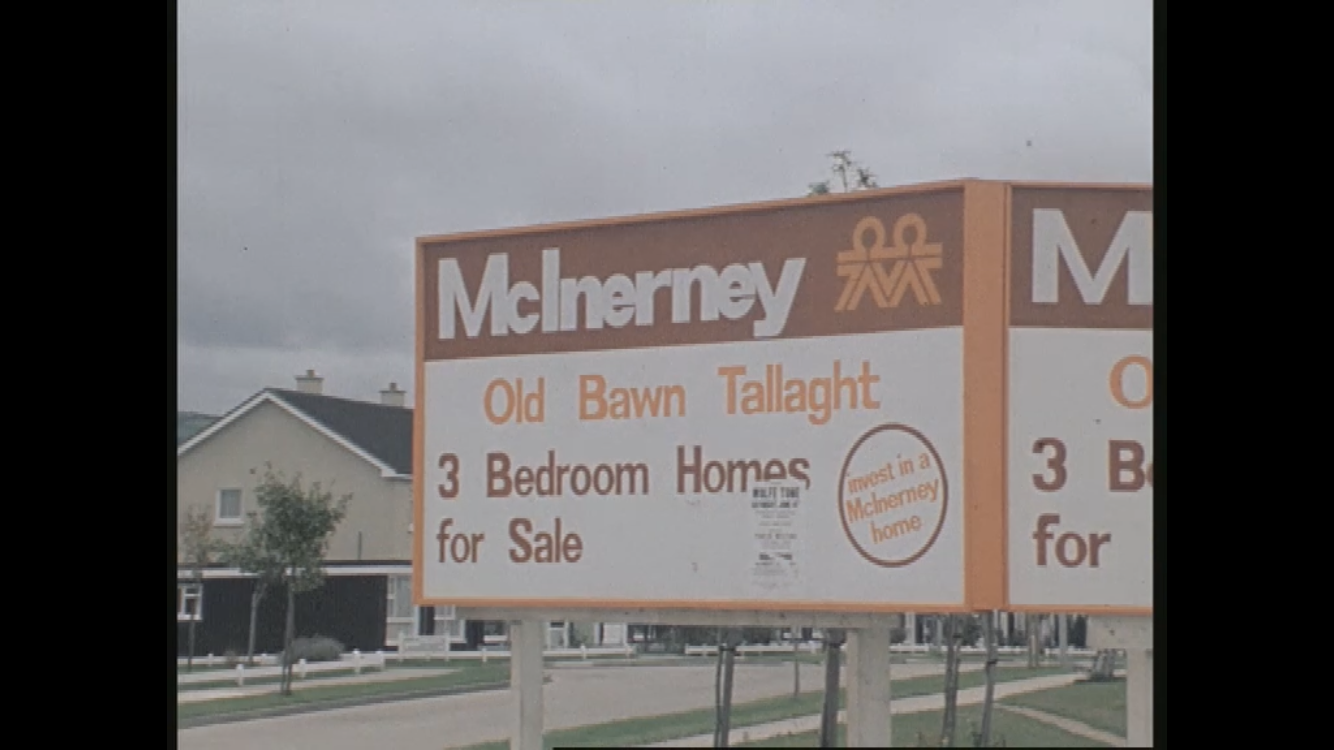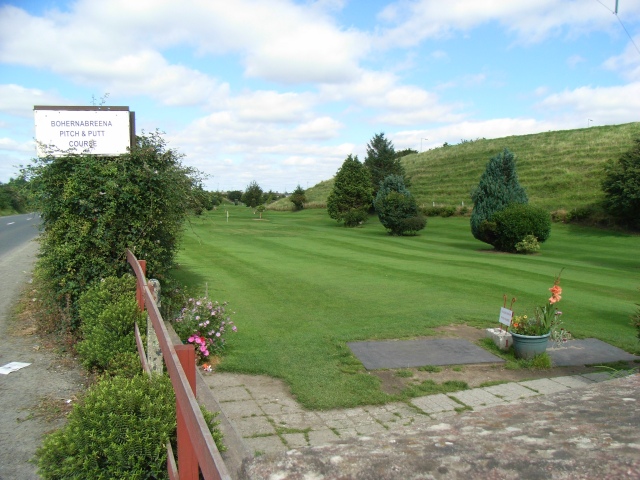Old Bawn on:
[Wikipedia]
[Google]
[Amazon]
Oldbawn (or Old Bawn, ) is a small suburban area now within
 McInerney Homes began construction of the Old Bawn Housing Estate as it lies today, in the 1970s.
These 3 bed semi-detached homes first sold for on average £3,700 Irish Pounds or €4,700.
McInerney Homes began construction of the Old Bawn Housing Estate as it lies today, in the 1970s.
These 3 bed semi-detached homes first sold for on average £3,700 Irish Pounds or €4,700.
 Amenities in the area include
Amenities in the area include
Tallaght
)
, image_skyline = TallaghtDublinD24.jpg
, image_caption = Tallaght, Dublin
, image_flag =
, flag_size =
, pushpin_map = Dublin#Ireland
, pushpin_label_position = left
, ...
on Dublin
Dublin (; , or ) is the capital and largest city of Ireland. On a bay at the mouth of the River Liffey, it is in the province of Leinster, bordered on the south by the Dublin Mountains, a part of the Wicklow Mountains range. At the 2016 c ...
's southside Southside or South Side may refer to:
Places
Australia
* Southside, Queensland, a semi-rural locality in the Gympie Region
Canada
* South Side, Newfoundland and Labrador, a community in the St. George's Bay area on the southwest coast of Newf ...
. Formerly a small village in its own right, it is situated between Sean Walsh Park and the River Dodder
The River Dodder ( ga, An Dothra) is one of the three main rivers in Dublin, Ireland, the others being the Liffey, of which the Dodder is the largest tributary, and the Tolka.
Course and system
The Dodder rises on the northern slopes of Ki ...
.
A bawn is the defensive wall surrounding an Irish
Irish may refer to:
Common meanings
* Someone or something of, from, or related to:
** Ireland, an island situated off the north-western coast of continental Europe
***Éire, Irish language name for the isle
** Northern Ireland, a constituent unit ...
tower house
A tower house is a particular type of stone structure, built for defensive purposes as well as habitation. Tower houses began to appear in the Middle Ages, especially in mountainous or limited access areas, in order to command and defend strateg ...
. It is the anglicised version of the Irish
Irish may refer to:
Common meanings
* Someone or something of, from, or related to:
** Ireland, an island situated off the north-western coast of continental Europe
***Éire, Irish language name for the isle
** Northern Ireland, a constituent unit ...
word ''bábhún'', meaning "cattle-stronghold" or "cattle-enclosure"
History
Old Bawn was the site of an estate for several centuries, and later of a small village, whose population reached over 380 in the mid-19th century to the current number of nearly 14,000. McInerney Homes began construction of the Old Bawn Housing Estate as it lies today, in the 1970s.
These 3 bed semi-detached homes first sold for on average £3,700 Irish Pounds or €4,700.
McInerney Homes began construction of the Old Bawn Housing Estate as it lies today, in the 1970s.
These 3 bed semi-detached homes first sold for on average £3,700 Irish Pounds or €4,700.
Old Bawn House
Old Bawn House was built in 1635 by Archdeacon William Bulkeley, son ofLauncelot Bulkeley
Lancelot (Launcelot) Bulkeley (1568? – 8 September 1650) was a Welsh Archbishop of Dublin and member of the Privy Council of Ireland.
Life
He was the eleventh and youngest son of Sir Richard Bulkeley of Beaumaris and Cheadle, but the eld ...
the Archbishop. It was situated where the St. Maelruan's school now stands. It was one of the first Irish houses that was not built purely for defence. Oldbawn had extensive pleasure gardens that survived, albeit in a neglected state, until 1900.
Old Bawn House was damaged in the rebellion of 1641, but restored shortly afterwards. The house was designed in an "H" shape with high-pointed gables and twelve chimneys. Its internal features included a chimneypiece and a carved oak staircase, both of which are now in the National Museum of Ireland. The chimneypiece reached to the ceiling and depicted the building of the walls of Jerusalem, dating back to 1635. There was also a lodge house built to the front of the house. Old Bawn House was enclosed by a wide fosse with a drawbridge. To the south of the house, there was a large garden laid out with walks, ponds and trees.
The house passed to Lady Tynte who leased it. In 1830, Old Bawn was bought by the McDonnell family who established a paper mill behind the house. The house fell into disrepair during the early 1900s, and was used as a storehouse when the lands were being developed in the 1960s. Eventually, Old Bawn house was demolished, and is now the site of the Maelruans Primary School.
Amenities
 Amenities in the area include
Amenities in the area include Tallaght Stadium
Tallaght Stadium ( ga, Staid Thamhlachta) is an association football stadium in the Republic of Ireland based in Tallaght, South Dublin. The club Shamrock Rovers originally announced details of the stadium in July, 1996. The stadium is now o ...
, Aylesbury Shopping Centre, Oldbawn Shopping Centre, a number of parks, and Bohernabreena
Glenasmole ( ga, Gleann an Smóil) is a valley in the Dublin Mountains in the south of County Dublin, Ireland. The valley itself is around in elevation and is surrounded by mountains exceeding in elevation. Kippure, at , is the highest mountai ...
Pitch & Putt club.
Community School
Old Bawn Community School is a secondary school located adjacent toSean Walsh Park
Sean, also spelled Seán or Séan in Irish English, is a male given name of Irish origin. It comes from the Irish versions of the Biblical Hebrew name ''Yohanan'' (), Seán (anglicized as ''Shaun/Shawn/ Shon'') and Séan (Ulster variant; angliciz ...
and the Tallaght
)
, image_skyline = TallaghtDublinD24.jpg
, image_caption = Tallaght, Dublin
, image_flag =
, flag_size =
, pushpin_map = Dublin#Ireland
, pushpin_label_position = left
, ...
Bypass in Oldbawn. Former students include footballers Keith Fahey and Stephen Kenny.
Demographics
According to the Central Statistics Office census of 2011, thetownland
A townland ( ga, baile fearainn; Ulster-Scots: ''toonlann'') is a small geographical division of land, historically and currently used in Ireland and in the Western Isles in Scotland, typically covering . The townland system is of Gaelic orig ...
of Oldbawn had a population of 13,480 people. This included 6,591 males and 6,889 females. There were 4,979 houses in the area, with a vacancy rate of 3.1%.
The Old Bawn Estate contains 1,418 homes; 797 in the Old Bawn Estate on 20 roads, 332 on what is known as the Irish Estate across 11 roads, 157 in Parkwood and 132 in Watergate.
References
{{coord, 53, 17, N, 6, 22, W, display=title, region:IE_type:city_source:GNS-enwiki Places in South Dublin (county) Uppercross Demolished buildings and structures in Dublin